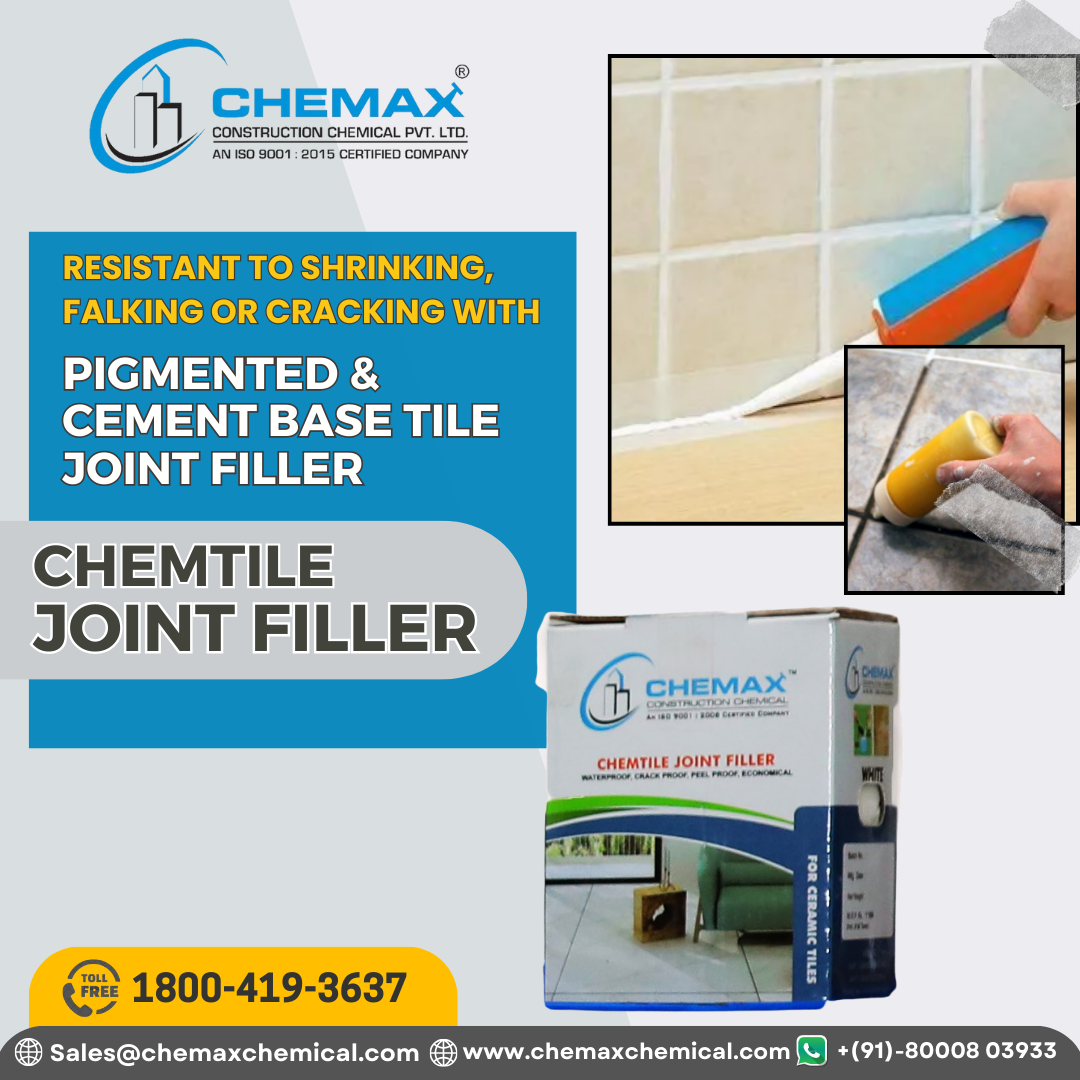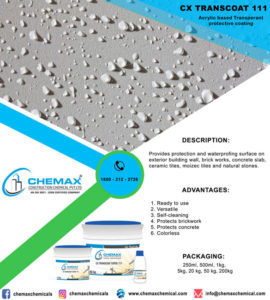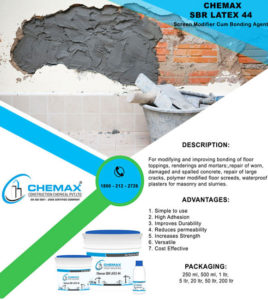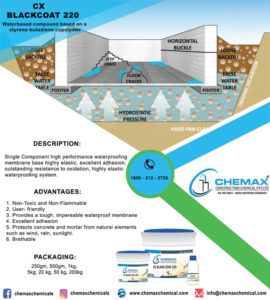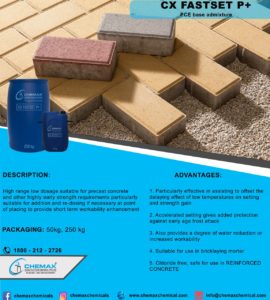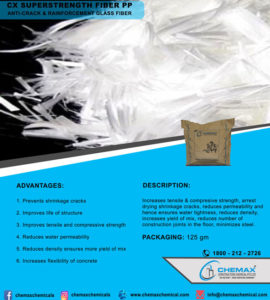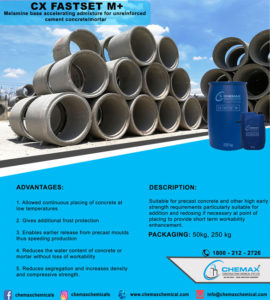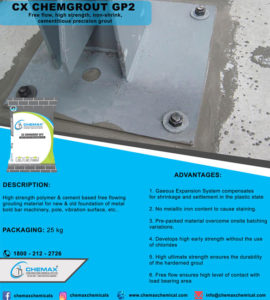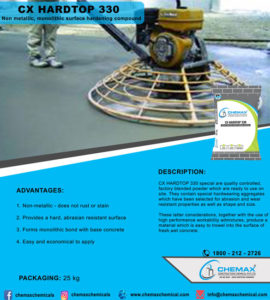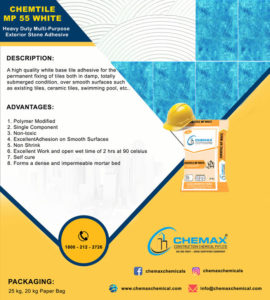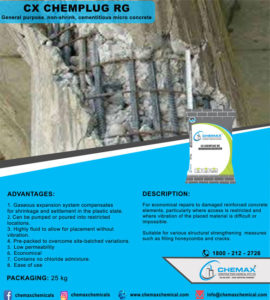Achieving a perfect finish in tiling jobs requires more than just choosing the right tiles. The overall longevity and aesthetic appeal of the tiled surface are greatly enhanced by the appearance and quality of tile joints, such as our CHEMTILE JOINT FILLER. Tile joint fillers are useful in this situation. The spaces between tiles are filled with tile joint fillers to produce a smooth, aesthetically pleasing finish. This article will examine the significance of tile joint fillers, go over their advantages, go over the various kinds of joint fillers that are available, and offer advice on how to select the joint filler material that is ideal for your area.
Importance of Tile Joint Fillers
Fillers for tile joints have practical as well as decorative uses. They are essential for attaining the ideal finish for the following reasons:
Stability and Durability: By reducing movement and keeping tiles from slipping, tile joint fillers increase the stability of the tiled surface. They form a solid connection between tiles, guaranteeing their long-term resilience and lowering the possibility of broken or loose tiles.
Moisture Protection: A barrier against the infiltration of moisture is created by properly filled tile joints. Joint fillers shield the underlying substrate from problems like mold growth, water damage, and tile deterioration by keeping water from leaking into the gaps.
Simple Maintenance: Cleaning and maintenance are made easier by well-filled tile joints. The work and time needed for routine maintenance are decreased when dirt, grime, and stains are easier to remove from joints that are smooth and well sealed.
Aesthetics: The color of joint filler selected can have a big influence on how the tiled surface looks overall. Joint fillers can either generate contrast to highlight the pattern or blend in perfectly with the color of the tiles to give a consistent look. They enhance the tiled space’s overall aesthetic appeal and visual impact.
Types of Tile Joint Fillers
There are several varieties of tile joint fillers, and each has special qualities and advantages. Let’s examine a few popular kinds of joint fillers
Cement-Based Joint Fillers: Among the most popular choices are cement-based joint fillers. They consist of additives, sand, and cement. These fillers come in a variety of hues and are both affordable and long-lasting. Fillers made of cement can be applied to many kinds of tiles and are appropriate for both indoor and outdoor use.
Epoxy Joint Fillers: These fillers are a well-liked option for regions that need to be very strong and resistant to moisture, chemicals, and stains. They provide a strong and long-lasting finish because they are made of epoxy resin and hardener. Epoxy joint fillers are frequently utilized in commercial contexts, including industrial settings, labs, and hospitals.
Silicone Joint Fillers: Because silicone-based joint fillers are so flexible, they’re great for places that move or vibrate. They offer strong defense against mildew, dampness, and UV radiation. In moist spaces like kitchens, baths, and swimming pools, silicone joint fillers are frequently employed.
Choosing the Best Joint Filler Material
Many aspects need to be taken into account when choosing the ideal joint filler material for your area, including:
Tile Type and Application: Take into account the particular application as well as the kind of tiles you’re utilizing. There are many kinds of joint fillers that work well with different kinds of tile and installation conditions. Whether the application location is a home bathroom or a business space with heavy usage, be sure the joint filler material is appropriate for your tiles and fits the specifications of the area.
Durability and lifespan: Evaluate the joint filler material’s longevity and durability. In order to guarantee that the filler can endure the demands of the space and retain its integrity over time, take into account the anticipated foot traffic, moisture exposure, and environmental conditions.
Aesthetic Considerations: The way the joint filler looks is a crucial factor to take into account because it can significantly affect how the tiled surface appears overall. Choose if you want the joint filler to stand out to provide a decorative contrast or to blend in with the tiles for a seamless finish. Numerous joint fillers are available in a range of hues to complement various tile selections and design styles.
Application Simplicity: Take into account how simple it is to apply and install the joint filler. While some materials are more user-friendly and may be applied by homeowners or do-it-yourself enthusiasts, others may require specialized tools or knowledge. To guarantee correct application, it’s best to speak with a professional if you lack confidence in your skills.
Maintenance and Repair: Consider how simple and easy it will be to maintain the joint filler material that has been selected. To keep certain fillers looking and working properly, they might need to be touched up or resealed on a regular basis. Knowing what has to be done for maintenance will enable you to decide how much time and effort you are willing to devote to upkeep.
Conclusion
Selecting the appropriate tile joint filler is essential to attaining an impeccable finish and guaranteeing the longevity of your tiled surface. You may make an informed choice by being aware of the advantages of joint fillers, investigating the various kinds that are available, and taking into account important elements like tile type, durability, aesthetics, ease of application, and upkeep.
Whether you’re choosing a joint filler for a residential or commercial location, don’t forget to give careful consideration to the unique requirements of the region in order to choose something that will hold up to frequent use. Getting professional advice or guidance from tile specialists can be quite helpful in determining which joint filler material is ideal for your particular needs.
Purchasing a premium joint filler will improve the longevity and long-term performance of your tiled surfaces in addition to making them seem better. To obtain the ideal finish and enjoy gorgeous, useful, and long-lasting tiled rooms, take your time, weigh your options, and choose the best tile joint filler.

